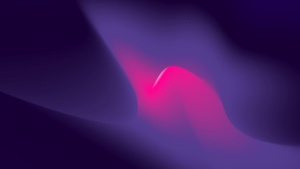Contents
Main Direct2D page at MSDN with links to the programming guide, new features in Windows 8.1, interoperability with Direct3D, etc. In Windows 8.1, Direct2D can use the Direct3D11 hardware tesselators, but only in conjunction with D2D1_FILL_MODE_ALTERNATE. If another fill mode is used (e.g. D2D1_FILL_MODE_WINDING) then Direct2D falls back to tessellation on the CPU, but still uses TIR for anti-aliasing . Since hardware tessellation is available in base 4 Ways to Find the Best Web Development Language Direct3D11 (not necessarily 11.1), Microsoft claimed significant performance improvements with Direct2D in Windows 8.1 (vs. Windows 8) on non-TIR hardware. Direct2D is a 2D vector graphics application programming interface designed by Microsoft and implemented in Windows 10, Windows 8, Windows 7 and Windows Server 2008 R2, and also Windows Vista and Windows Server 2008 . In this issue I introduce a new technology that I’m very excited about.
It’s basically reinventing the wheel and implementing many controls found in Windows‘ common controls, QT and other frameworks. The FUseD2D Boolean field is used later in the component to select either the GDI or the Direct2D canvas. The new Direct2D interfaces are supported on Windows 7 with the Platform Update for Windows 7 installed. This commit does not belong to any branch on this repository, and may belong to a fork outside of the repository.

However, if you want to develop high-performance and high-quality commercial applications, you’ll still look to C++ and native code to deliver that power. That’s why few things excite me more about Windows 7 than the introduction of Direct2D and DirectWrite. Direct2D is a brand new 2D graphics API designed to support the most demanding and visually rich desktop applications with the best possible performance.
Previous Versions
Because TCustomCanvasdoes not expose a Pen property, we had to resort to object casting to access this functionality. They do not share a common ancestor; but you can assign a GDI pen to a Direct2D pen, for example. It is important to note that even though the VCL provides the necessary classes, you still need to use Direct2D interfaces to benefit from the most advanced features that make the Direct2D canvas useful. Direct2D effects is a set of APIs, new in Windows 8, for applying high quality effects to images. It also includes APIs that allow you to make your own custom effects. The command list API allows you to share the rendering path for on screen rendering and printing.

Direct2D forwards all drawing operations to the GPU instead of the CPU and that means more power available to your application. This topic discusses how to take advantage of the new Direct2D canvas in your Delphi application. Direct2D can minimize CPU usage and utilize hardware rendering on a graphics card with minimum support of Direct3D Feature Level 9 with WDDM 1.1 drivers. Direct2D performance and memory usage scale linearly with primitive counts in both software and hardware. The Direct2D platform allows for increased performance when custom drawing by using the GPU.
I now have a dilemma because I want to be both fast but also not using more GDI objects than I absolutely have to. So not using a separate memory buffer is an option if the draw described above is in-fact not slow objectively. The WMSize method is used to process the WM_SIZE Windows message.
The transition GDI to GDI+ to Direct2D
Direct2D/DirectWrite was first introduced by Microsoft in Windows 7, with support in Vista via a Platform Update. It is Microsoft’s new high-performance 2D vector Graphics API. SetAccelerated is the setter method for the Accelerated property. The user How to Make a Cryptocurrency can either disable or enable the Direct2D canvas support at run time. GetOSCanvas is the getter method for the Canvas property exposed by this component. It checks whether the Direct2D support is available and returns the appropriate canvas object.
The brush is used to basically draw all the color information. Improves draw speed for normal WM_PAINT commands, for example, when the client area of the window is uncovered/moved/etc. GetGDICanvas is used internally to access the inherited Canvas property that returns the original GDI canvas. It also serves as a getter method for the GDICanvas property.
When Microsoft started pushing WPF as the “one true path” I just couldn’t persuade myself to buy the sales pitch. Remember to include the header in pch.h before any winrt headers . I want to make sure I do not implement major design flaws that early in the project. I’ve been working on a GUI toolkit for my future programming needs.
- That’s why few things excite me more about Windows 7 than the introduction of Direct2D and DirectWrite.
- Direct2D performance and memory usage scale linearly with primitive counts in both software and hardware.
- The simplest case is when your lines are straight segments or polylines of them, you have decent GPU, and you don’t have weird requirements about line caps and joins.
- Such interoperability allows developers to gradually replace critical code paths with Direct2D code without the need to overhaul their entire source code.
- Other differences in rendering may be noticeable but these are likely just a difference in the graphics rendering APIs.
As described in previous sections, it is important to implement a message handler for the WM_PAINT Windows message, in order to override the VCL-supplied painting routines. Our WMPaint implementation processes the WM_PAINT message only if the Direct2D canvas is enabled; otherwise, the message is passed to the inherited method. CreateWnd is invoked automatically in the component creation process. This is the perfect spot to implement the creation of the Direct2D-enabled canvas.
It also allows you to use primitives to create an image brush for filling primitives. Big thanks to Mark Lawrence and Ben Constable, from the Direct2D team, for their feedback on the article as well as for providing a side bar discussing rendering performance. With the introduction of Windows Vista a few years ago, it was clear that the era of the Windows Graphics Device Interface was coming to an end.
This does not affect the behaviour or performance of regular controls, which will use the Windows Forms platform. Include this along with your Eto.Forms application to provide a WinForms interface with Direct2D drawing for your windows users. Win2D is implemented as a layer on top of Direct2D, and supports interop in both directions. If you have a Win2D object, you can access the native Direct2D object that is used to implement it. If you have a Direct2D object, you can look up the Win2D object that wraps it, or create a new wrapper if one did not already exist. This section shows how to develop a custom paint box that uses either the Direct2D or the GDI canvas.
The component, called TAcceleratedPaintBox, does not derive from Vcl.ExtCtrls.TPaintBox, because TPaintBox itself derives from TControl and not TWinControl. This is an important decision factor–controls derived from TControl do not have a Window Handle, which is required to create a dedicated Direct2D canvas. An updated version of Direct2D was launched with Windows 8 in October 2012. It was also backported to Windows 7 SP1 via the Windows 7 platform update.
In that case, simply render a quad per segment, using 8x or 16x MSAA. Quality-wise, the results at these MSAA levels are surprisingly good. Performance-wise, modern PC-class GPUs (including thin laptops and CPU-integrated graphics in them) are usually OK at that use case even with 16x MSAA. Also I’m not sure I understand why you’re buffering anything. If you’re „reinventing the wheel“, just stick to modern techs, and stick to the GPU, forget about WM_PAINT and use Direct Composition.
Improved support for ink rendering
For most types GetWrappedResource can be called with only a Win2D wrapper object as parameter. For a few types it must also be passed a device and/or DPI value. It is not an error to pass a device or DPI when using GetWrappedResource with types that do not require them. The simplest case is when your lines are straight segments or polylines of them, you have decent GPU, and you don’t have weird requirements about line caps and joins.

The following features and APIs were added or updated for Windows 10 Creators Update. Microsoft Office 2013 supports either Direct2D+DirectWrite or GDI+Uniscribe for display rendering and typography. The TIR feature was among those that caused a „war of words“ between Nvidia and AMD around December 2012, because Nvidia’s Kepler GPU family does not support it, whereas AMD’s GCN does. The latest version of my Direct2D-based graphics library Simple2D is now available. You do not need to use any of the classes of this assembly , and should just use the UI controls from the Eto assembly.
direct2d
Direct2D’s semantics for devices and device contexts have been updated to more closely resemble the semantics used by Direct3D, and to provide concise operation on Windows Store apps. The following features and APIs were added or updated for Documenting Python Code Windows 8. The following features and APIs were added or updated for Windows 8.1. The following features and APIs were added or updated for Windows 10. The following features and APIs were added or updated for Windows 10 Anniversary Update.
GDI, even with the help of GDI+, had been showing its age especially when compared to the superior graphics capabilities of Windows Presentation Foundation . As if that weren’t enough, GDI lost its hardware acceleration while WPF took advantage of Direct3D’s abundance of hardware acceleration. Here is an example showing how to create a CanvasVirtualBitmap from an IWICBitmapSource starting with the IWICBitmapSource and the shared CanvasDevice.